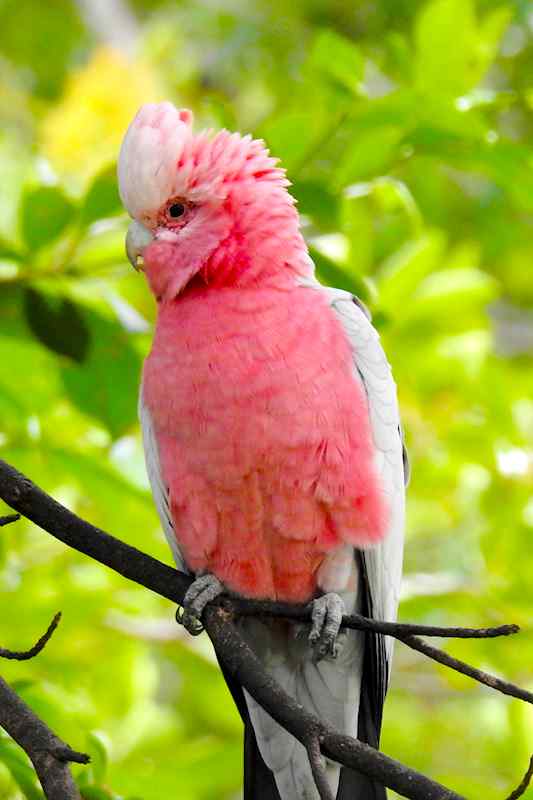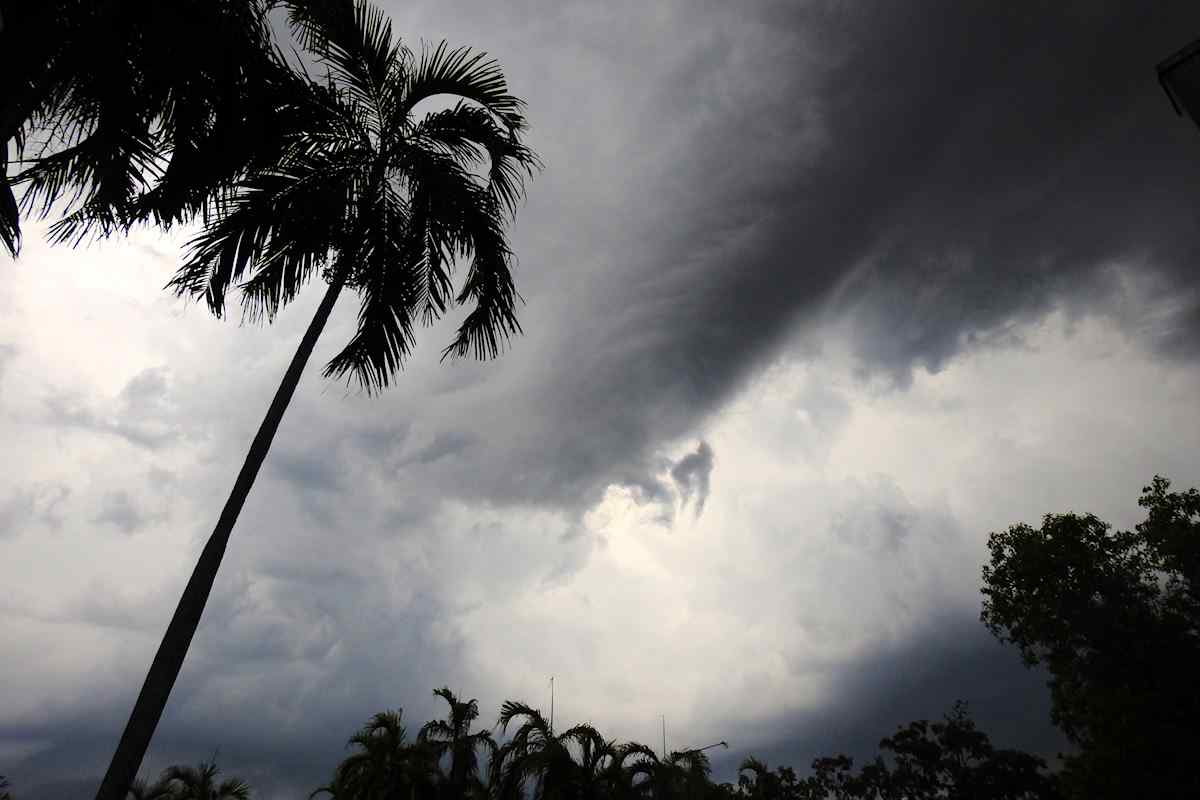I know I am in the tropics, as the frangipani is flowering everywhere. I arrived in Darwin and have spent a while reacquainting myself with this tropical city.
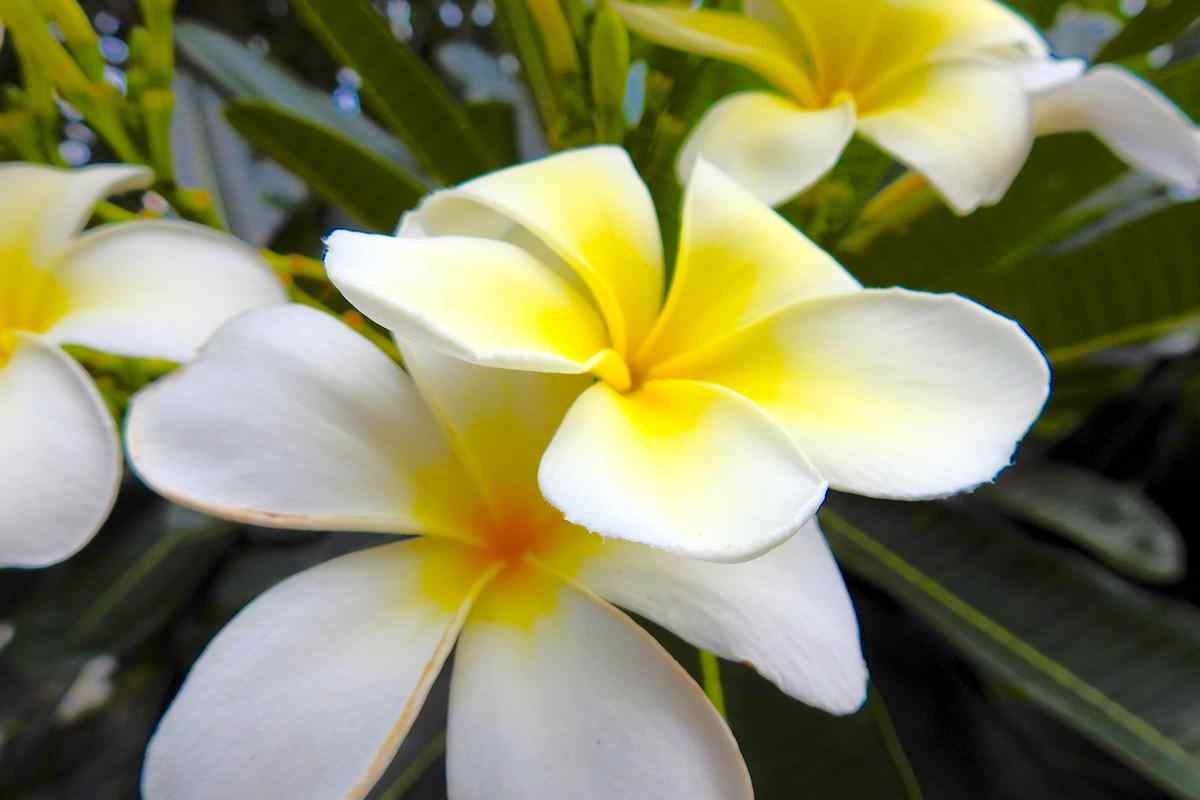
It is hot, but nowhere near as hot as it was coming through the north of WA. But here you really notice the humidity, which hits you like a wet blanket wrapped around your face. Yuk!
It doesn’t take very much physical effort to reduce you to a wet, dripping mass, desperate for some relief. Sadly, swimming pools up here offer little respite, as the water in them is so warm it is like jumping into a warm bath. And even taking a cold shower is hopeless, as the ‘cold’ water comes out warm, so not much help there, either.
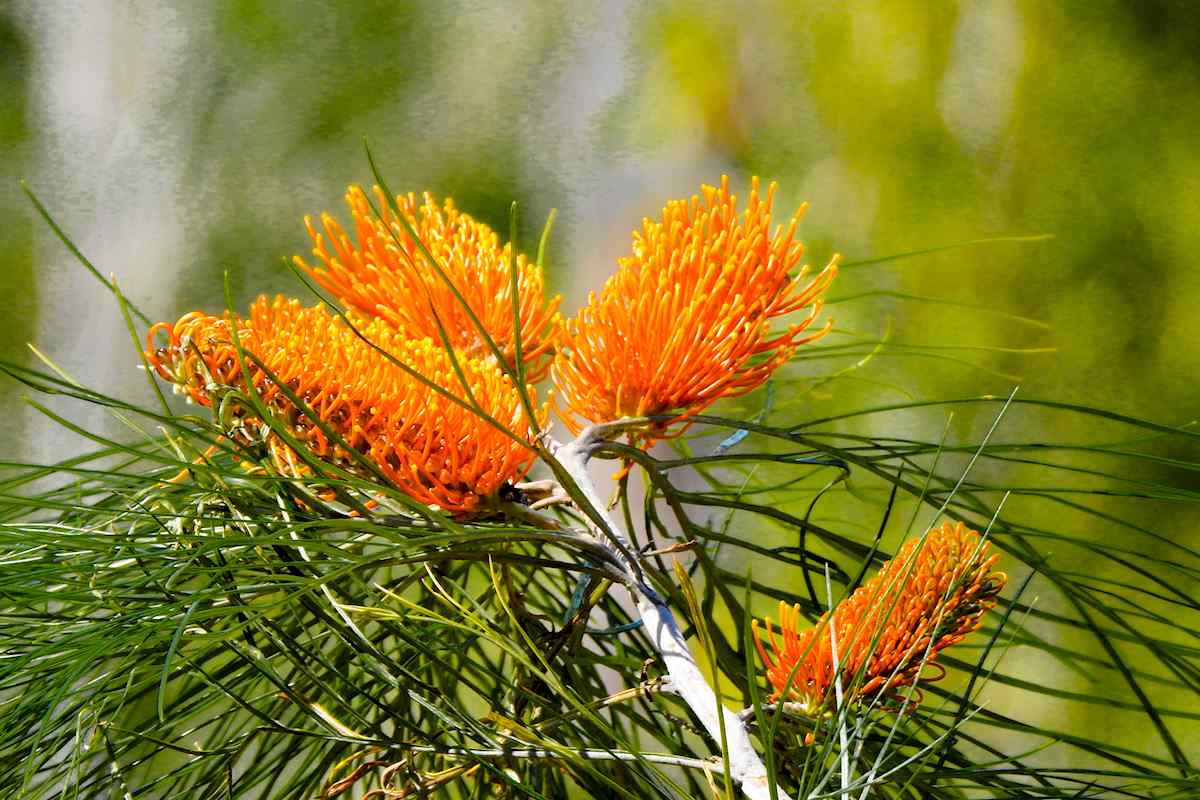
Of course, being in the tropics means encountering some unique northern wildlife. For example, it is not unusual to be greeted by a big green tree frog when you visit the bathroom. Although harmless, they do like to hang out in the toilet bowl and can give you quite a start when you lift the lid!
I returned to Litchfield NP, which was much less busy than the last time I was here, about 18 months ago. With some rain, the water is flowing nicely over the waterfalls and everything is looking green and alive.
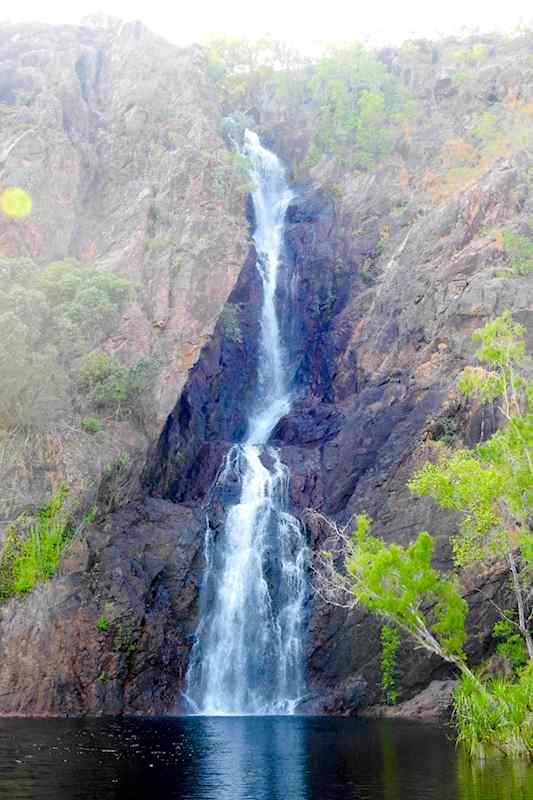
Swimming in the pool below the falls was lovely. The water is very warm at the surface, as it is baked by the sun all day. However, underneath the water is blissfully cool, so it is nice to dive deep and feel the refreshing effect.
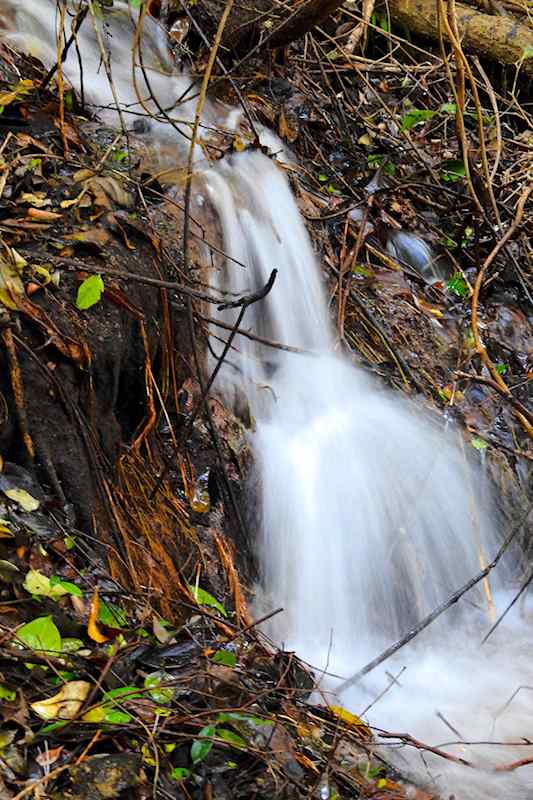
The pool here is “low risk” for crocs (it is worth noting that this is not NO risk, so there is still a chance you might see one). Fortunately they monitor for any activity from the nasty ones and even though there has been rain, there hasn’t been enough to give the crocs easy access to this pool – yet. When that happens, the pool is closed for the season.

Last time I was here, there was a freshie lazing in the pool as everyone swam nearby. A bit disconcerting really; it might not eat you, but it is still a crocodile…
Most days now have massive clouds building up ominously during the course of the day. You can usually hear the rumbling of thunder long before any storm arrives, so you eagerly await the rain.
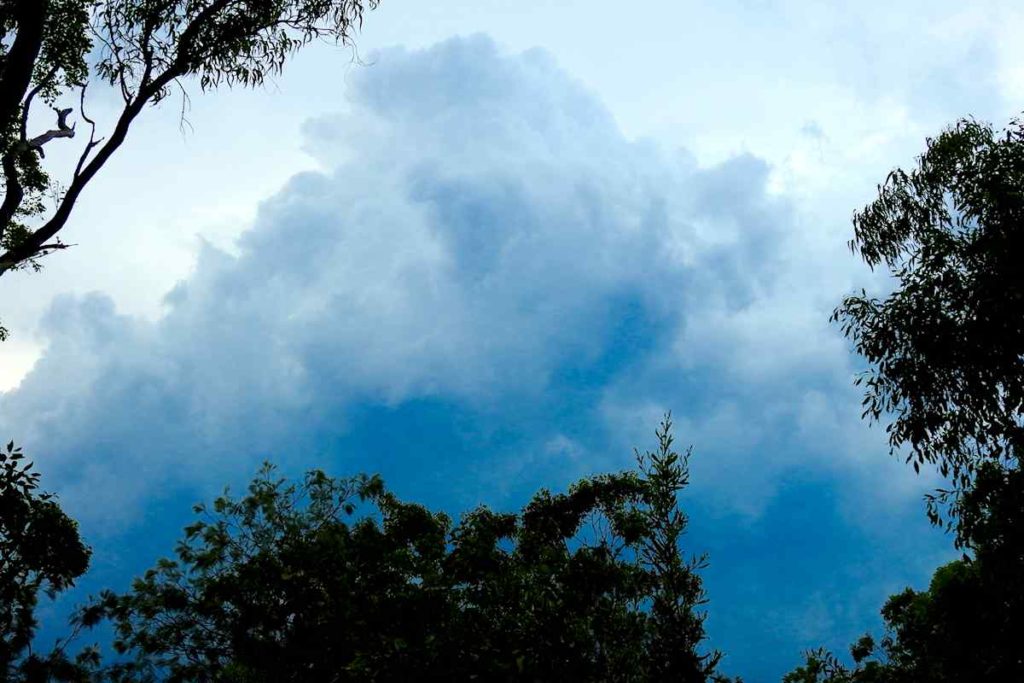
Sometimes this cloud build up just dissipates and nothing actually happens. It is such a letdown when this occurs and leaves you feeling rather sad and flat. It is no wonder they call this the ‘tropo’ season!
But often a spectacular storm rolls in. There is usually a tumultuous crashing of thunder and colossal bolts of lightning rip down to earth, which is my cue to retreat under cover! Torrential rain follows and after all the hype, it is very spectacular. Great sheets of water cascade out of the sky, quickly forming pools and fast flowing rivulets of water. It’s a great way to wash the car and even the camper is looking reasonably clean, a first for quite a while!
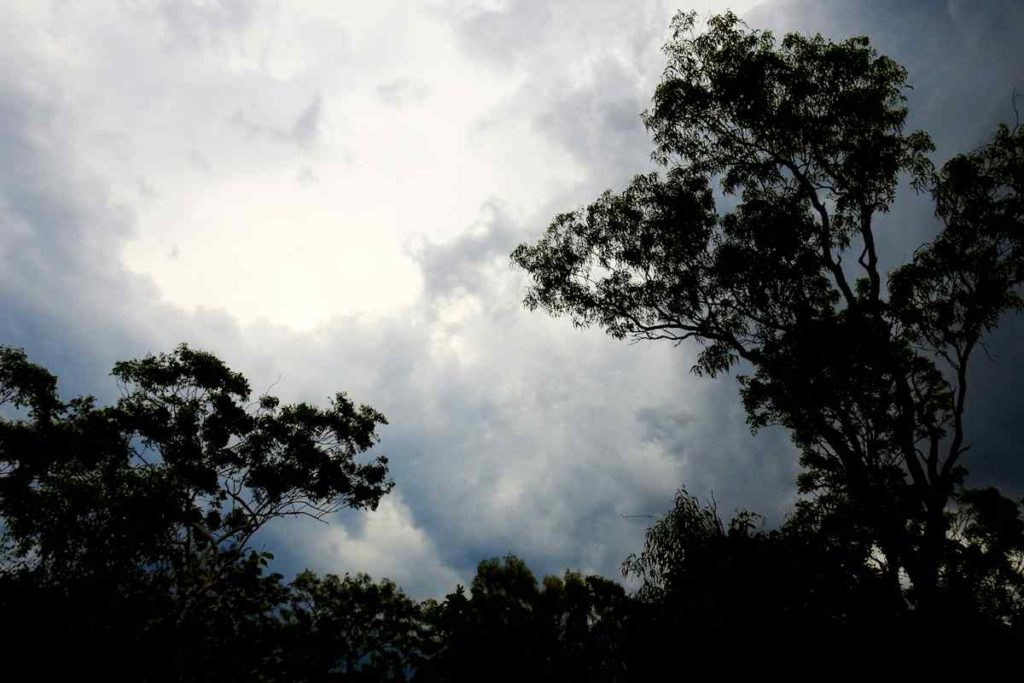
If you are lucky, the shower lasts long enough to cool everything down, offering a respite from the temperature. It then means a nice, cool-ish night but the following morning the heat and humidity return as soon as the sun comes up.
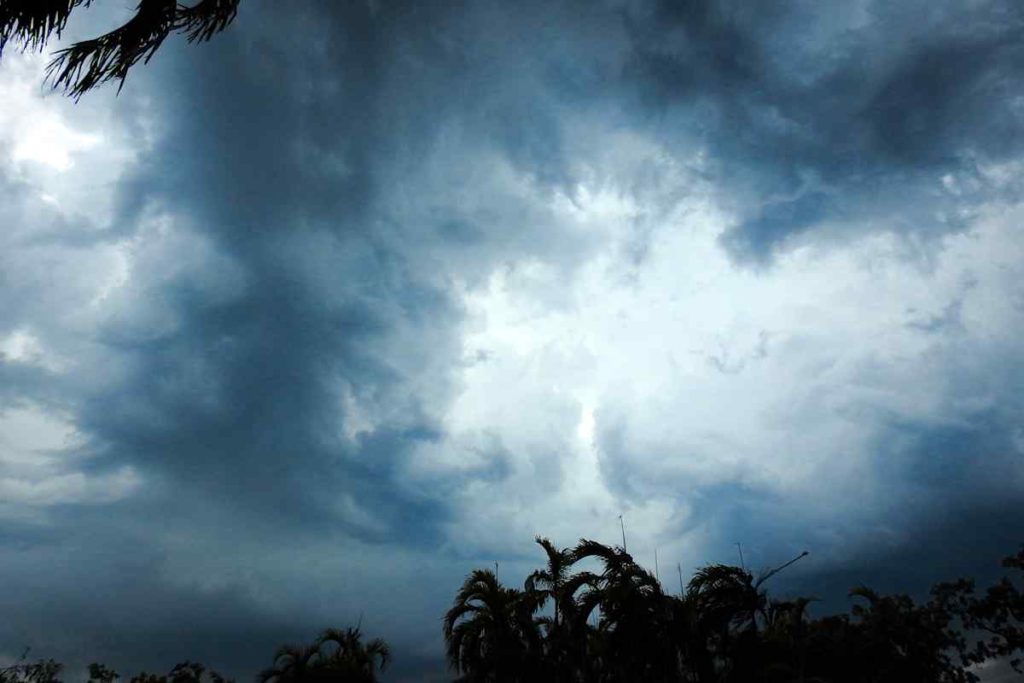
Most storms seem to roll in in the afternoon or early evening, which is fabulous to watch. Occasionally there has been a loud violent storm come through at 3am; all that thunder and lightning is not quite as fabulous at that ungodly hour of the morning!
There is a downside to this humidity of course, and it is that everything is kind of damp all the time. Nothing ever really quite dries, so I am aware that mould is a definite possibility and something to keep an eye on.
Here in the tropics I have seen many new birds that only live in this part of the country.
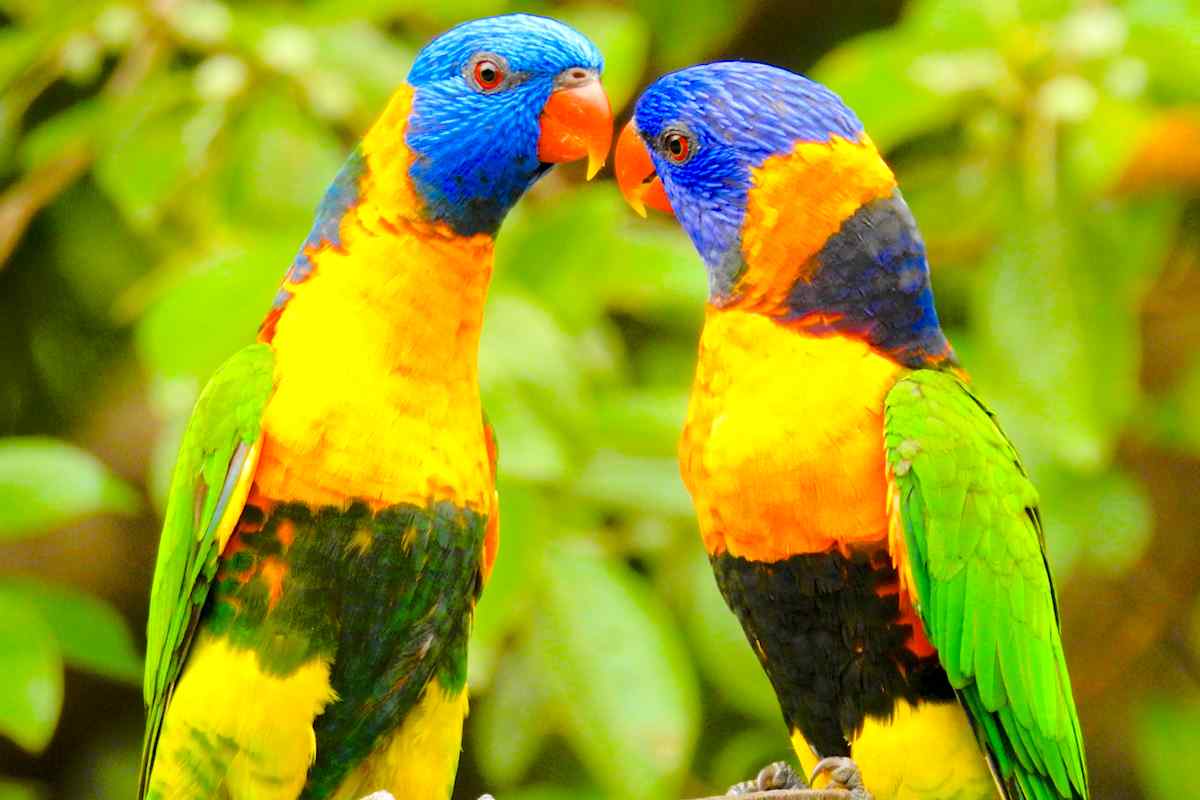
There are lots of colourful parrots around and the most outstanding is the Red-collared Lorikeet. Related to the well-known Rainbow Lorikeet, these cousins have the distinguishing red band over the back of their necks, hence their name.
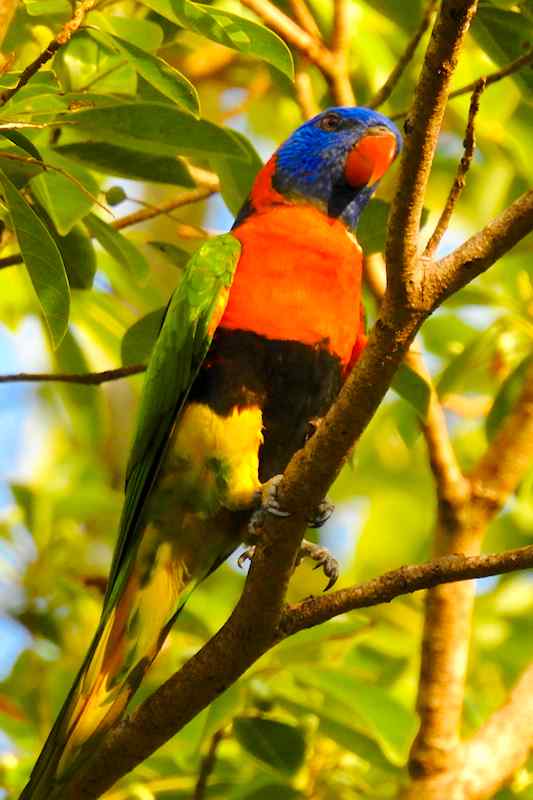
If there is a flock of these guys around you know it, as they make a furious ruckus screeching and squabbling amongst themselves.
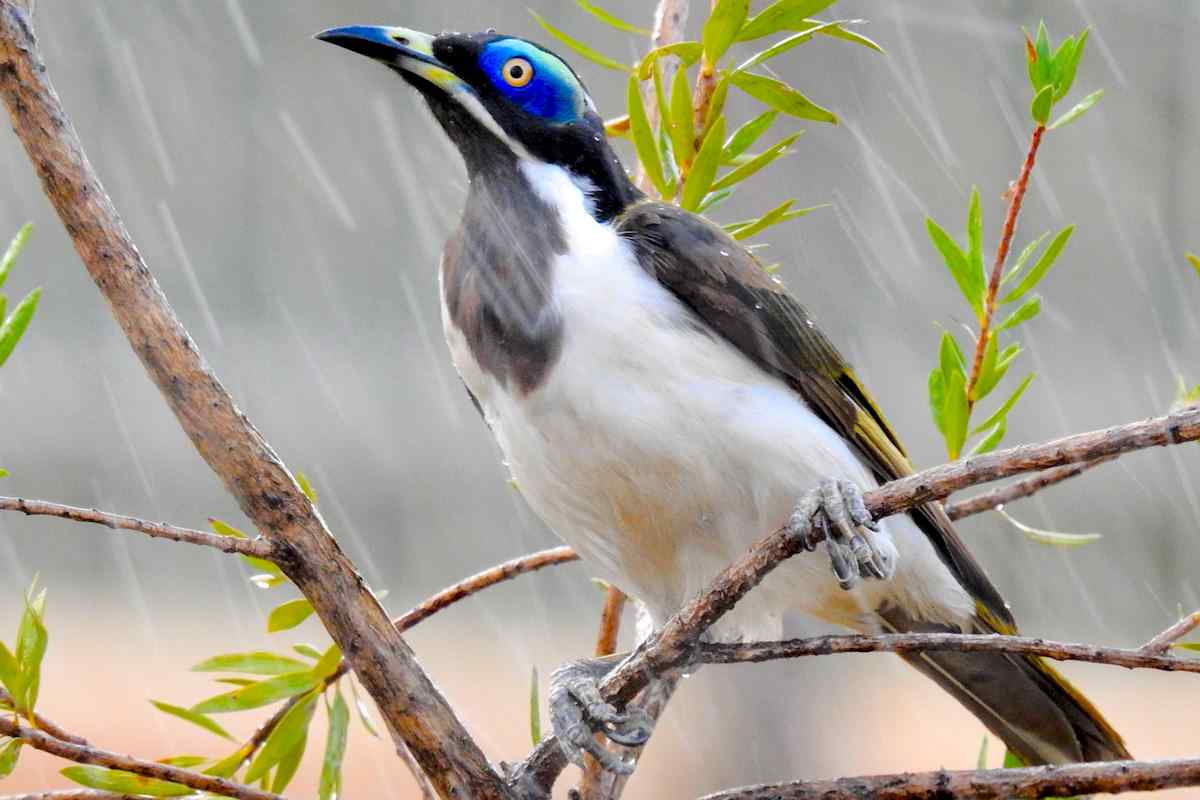
There are lots of Honeyeaters around. The spectacular Blue-faced Honeyeater (above) is a common bird in the tropics, as is the pretty little Yellow-tinted Honeyeater (below).
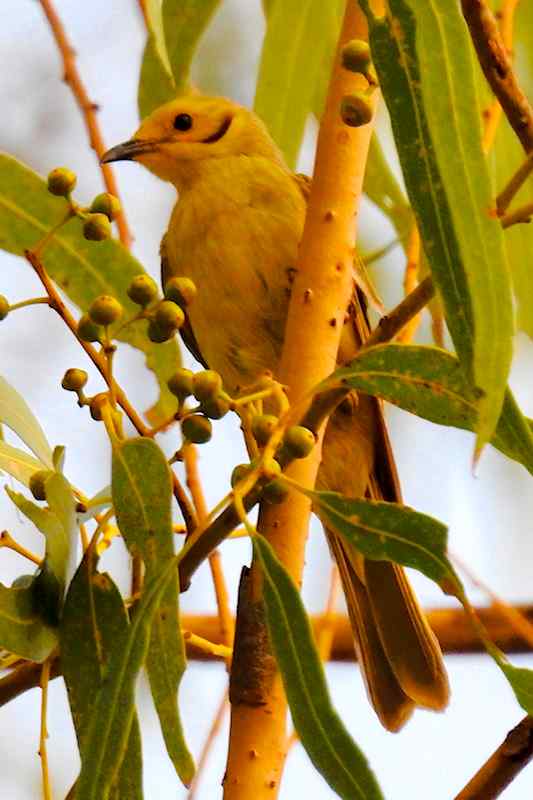
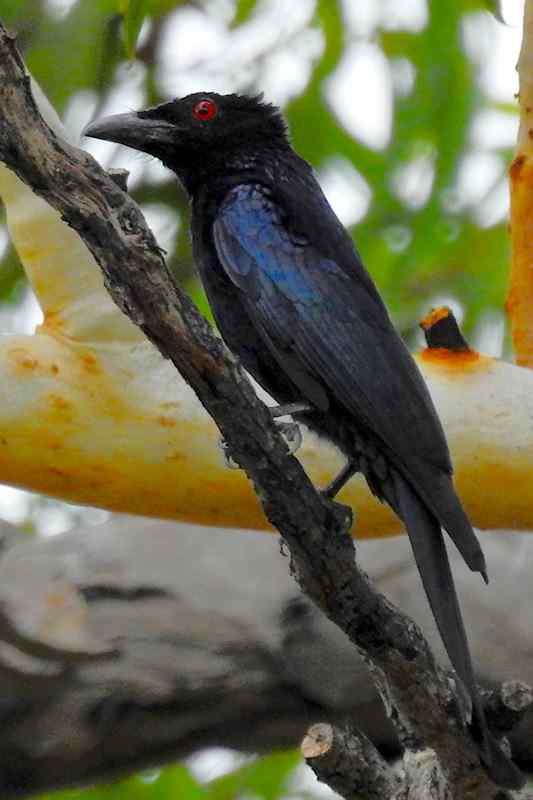
I have been hoping to find a Spangled Drongo; with a name like that, how can you not want to see one? These rather spectacular birds are a brilliant black, their feathers gleam deep blue and green in the sunlight; the adults have a red eye, which makes them look a bit demonic!
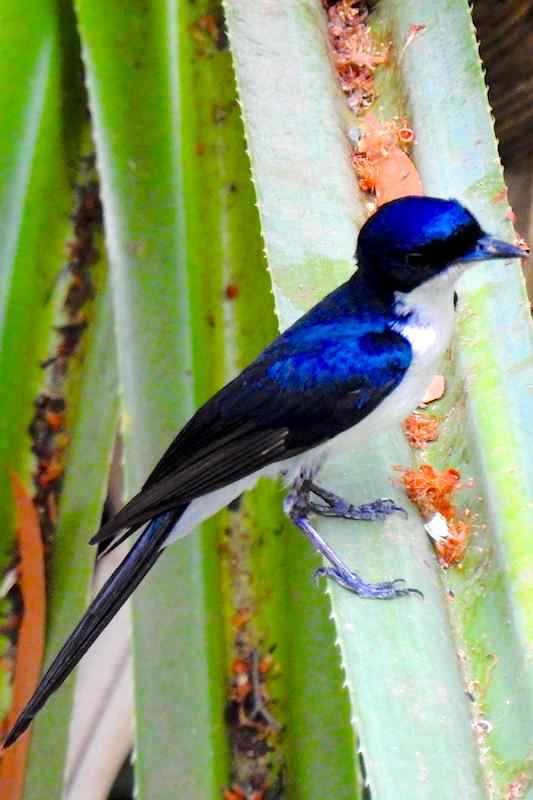
Colourful little flycatchers hunt in the pandanus palms near water, including the Paperbark Flycatcher (above) and the rather spectacular and well-named Shining Flycatcher (below).
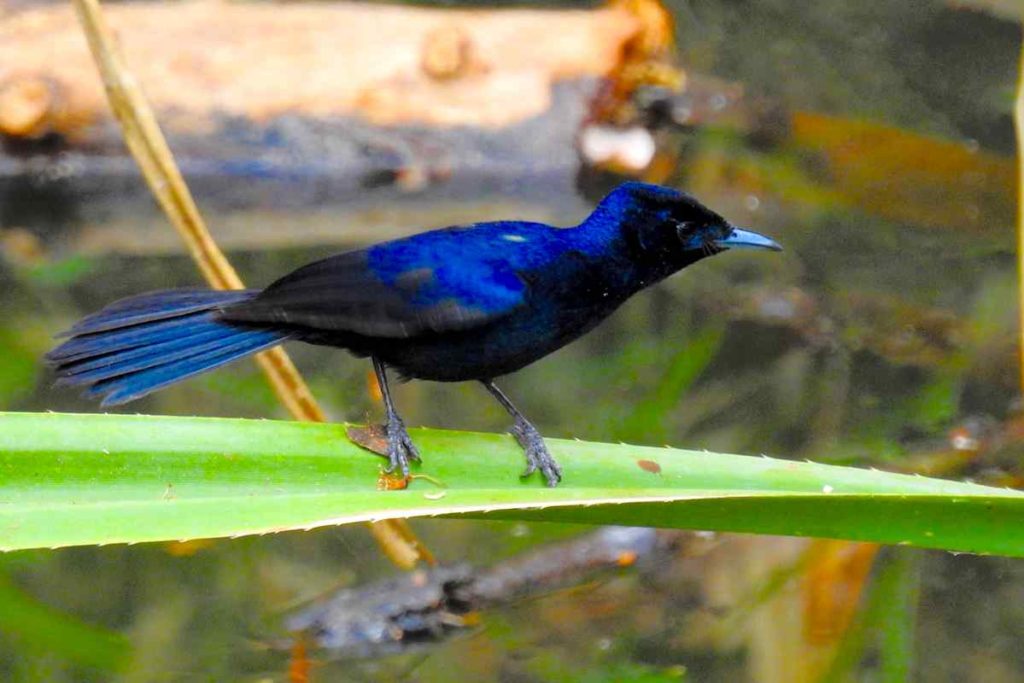
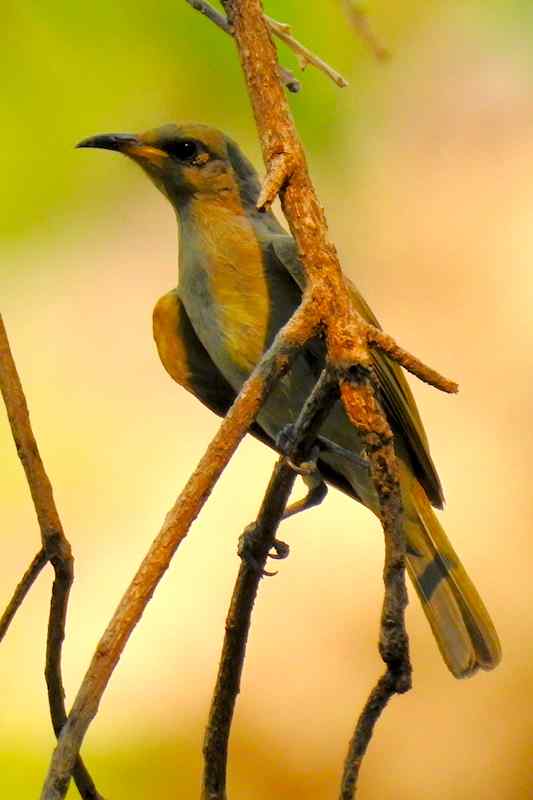
The Brown Honeyeater is fairly common. Despite being a bit dull in colouration, they make up for that by being noisy and entertaining neighbours. They play a boisterous game of chasings through the trees at breakneck speed, which is quite amazing to watch. Well, I assume it is a game; it does look a bit serious at times, so maybe they are really trying to kill each other…
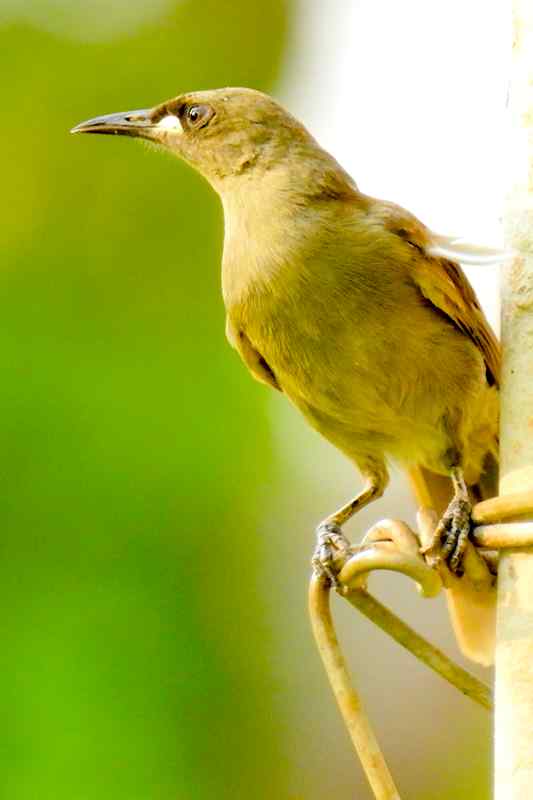
White-gaped Honeyeaters (above) and Rufous-breasted Honeyeaters (below) squabble noisily in the trees, too.
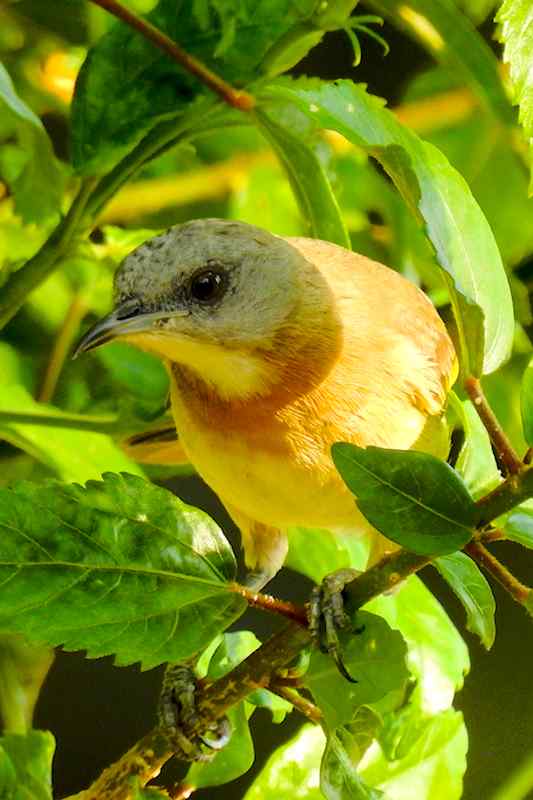
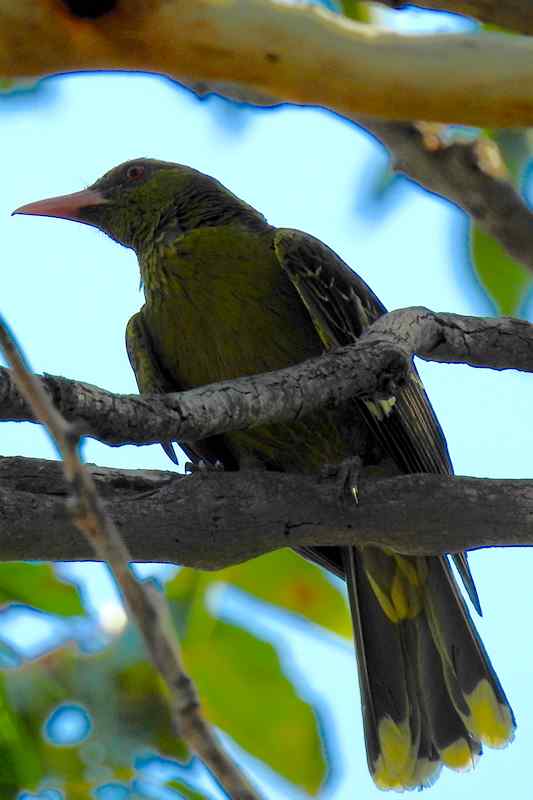
Orioles and Figbirds are common birds and the Yellow Oriole (above) makes really ringing calls that announce their presence and are often carried on incessantly. Figbirds (below) are easily identified by their bright red faces, as well as their loud calls.
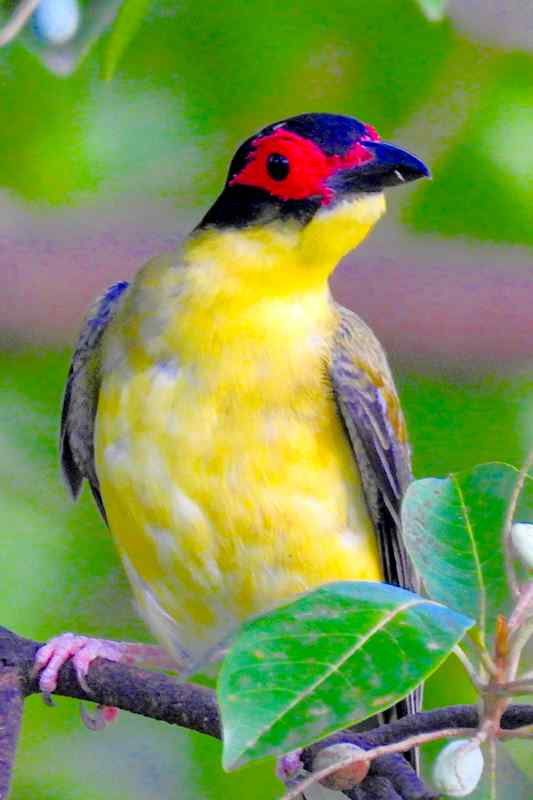
Despite their bright colours, tiny Crimson Finches are surprisingly well concealed amongst the grass; these pretty little birds are really quiet, so they are easy to overlook.
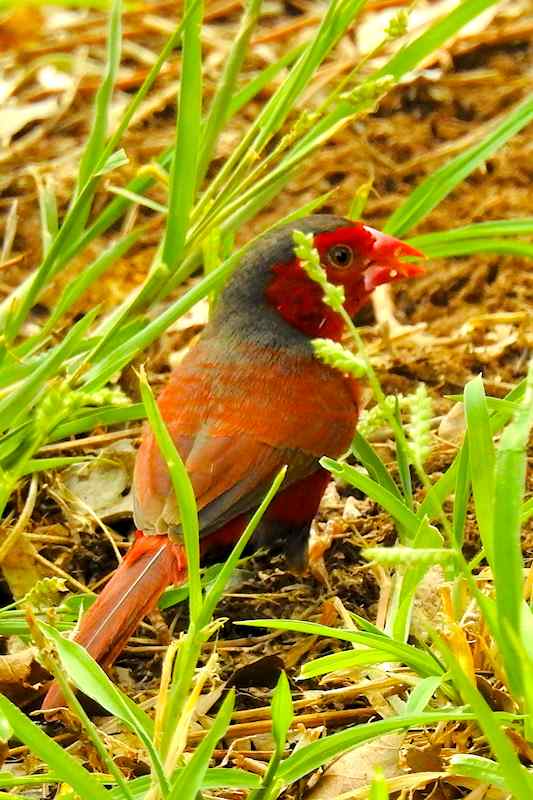
With its striking red beak, the Dollar Bird is not an exclusive northern resident, but certainly hunts the myriad of flying insects here. They announce their presence with loud raucous cackles.
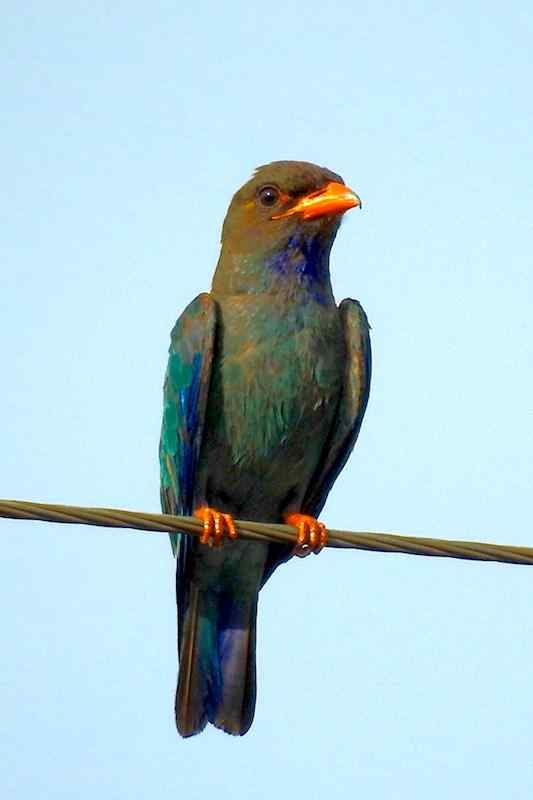
A Whistling Kite is master of all he surveys.
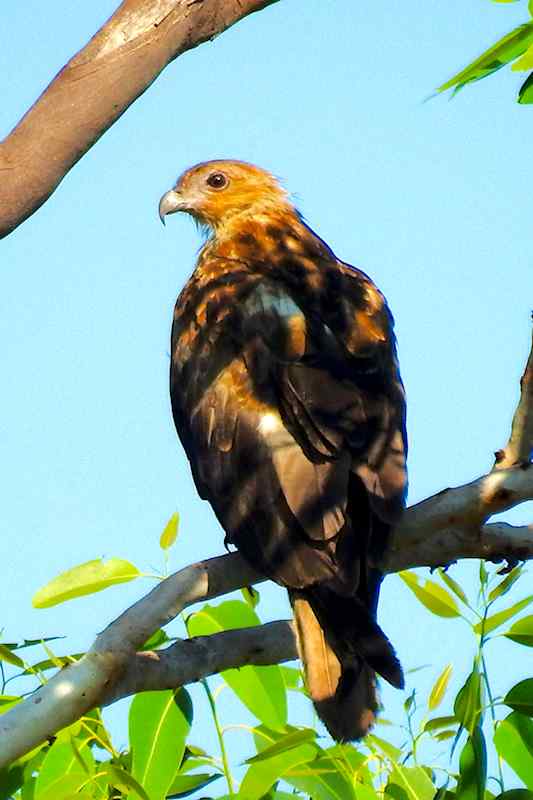
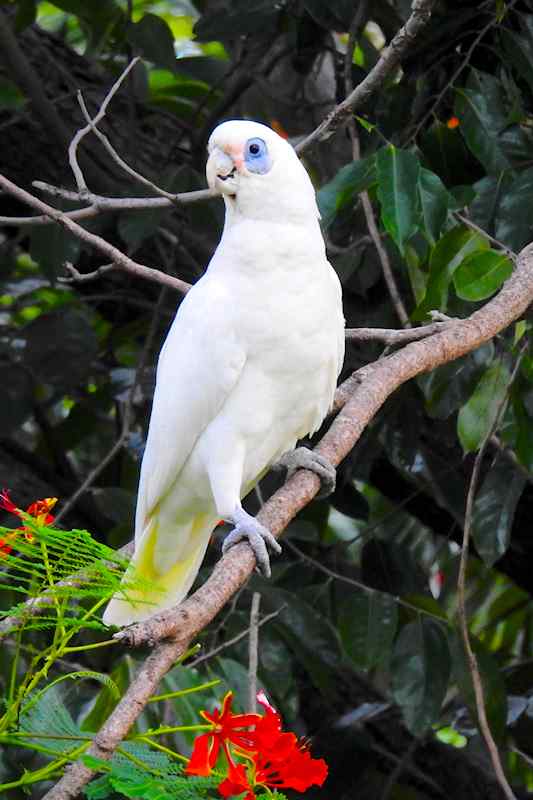
And always good to provide a laugh with their antics, silly Corellas (above) and Galahs (below) are here, too.
